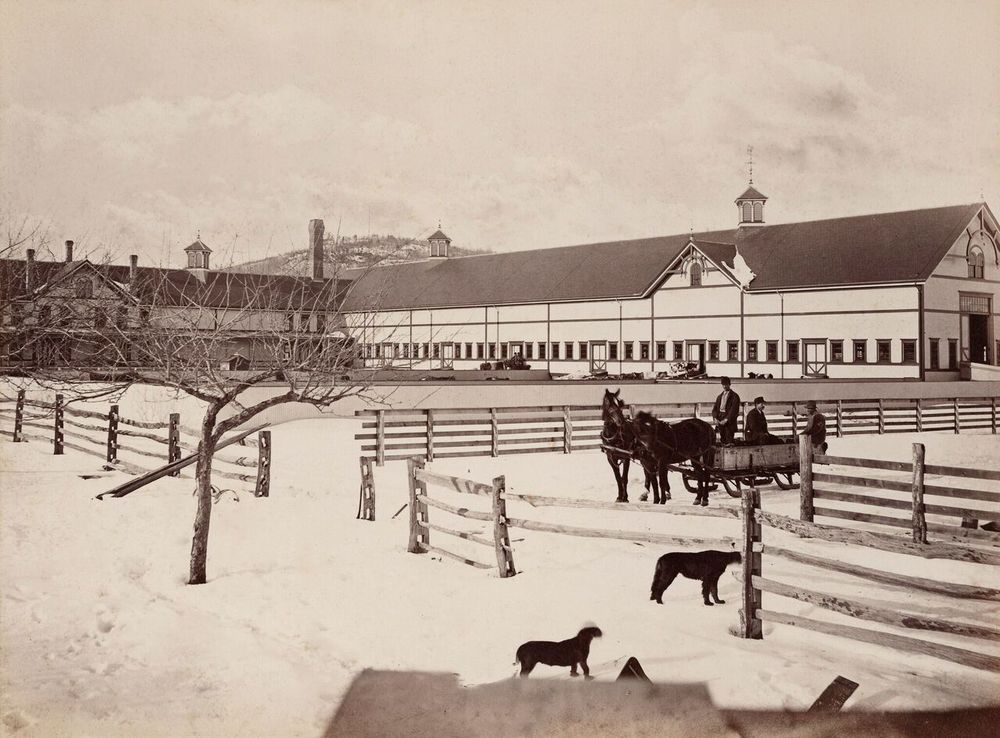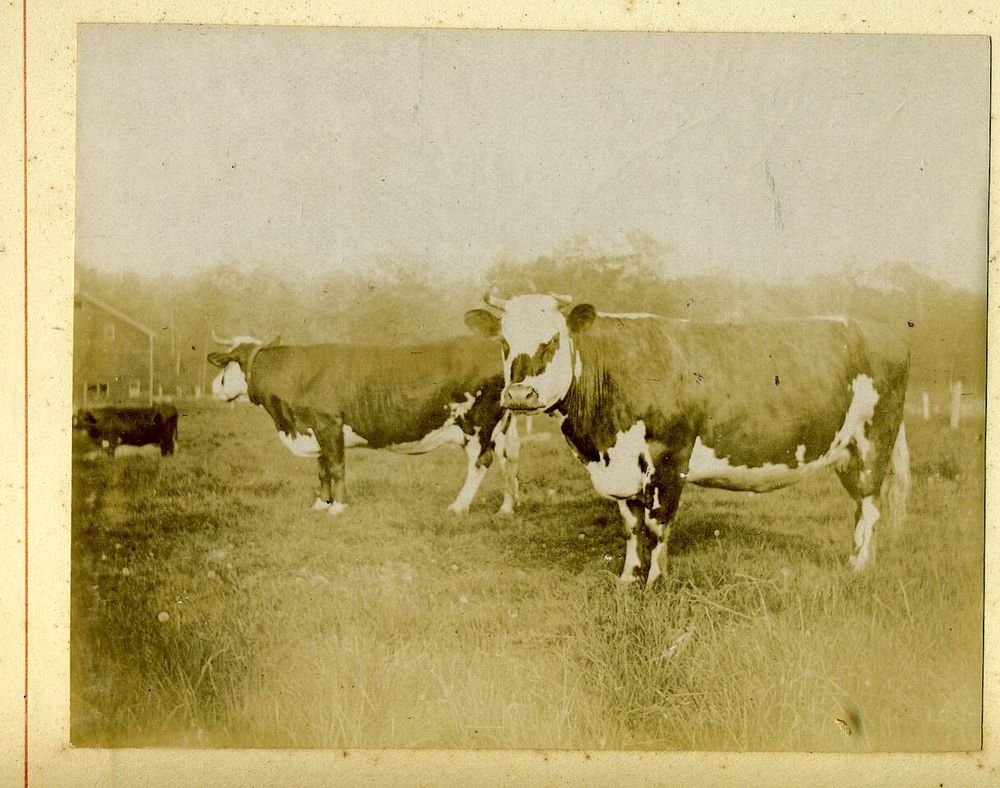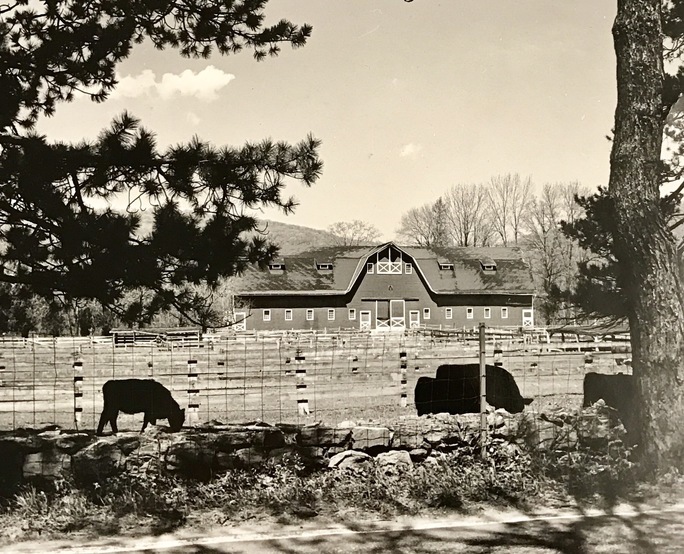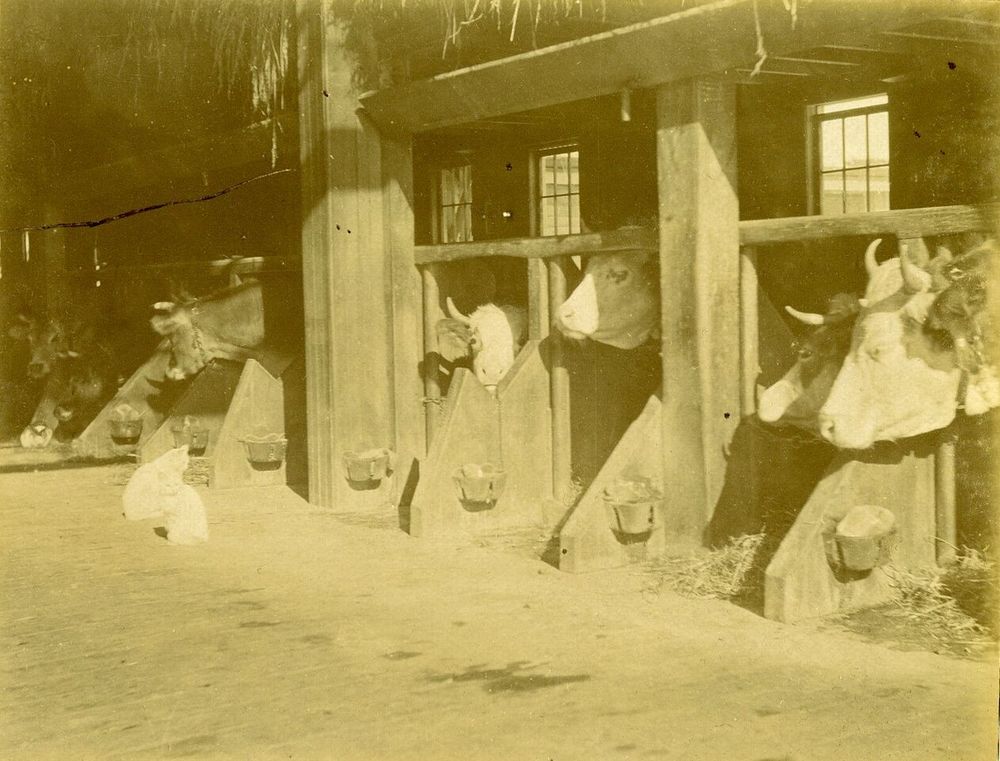World Famous Cattle

A view of the massive cow barn, the focal point of the entire farm, 1890s

Some of the world-famous Mountainside cattle

Grazing cattle

Some of the "elegant" stalls in the Mountainside cow barn
The Barns
The cow barns, one side of which is seen here, were described by one reporter as being “as elegant as human habitations.” As one can imagine, the barns were the focal point of Mountainside Farm. They received the most attention from visitors and when sifting through old images of the farm, the barns appear to be the most photographed portion of it. One can see why this might be so by merely observing the extravagant buildings pictured here (see “A view of the massive cow barn”). It was certainly not common for a farm to look so luxurious, but Theodore Havemeyer took great pride in Mountainside; his cow barns were the most expensive of their kind at the time. He even commissioned his personal architect, Dudley Newton of Newport, Rhode Island, to design the buildings. Havemeyer had a large presence in Newport, having spent summers there with his family on an almost yearly basis, and Newton had designed several elegant buildings for the town. He met Newton there and had him design both his farm buildings and the Darlington Schoolhouse, which would be constructed after the farm. Havemeyer then sought out the Cass & Kennedy company of Cambridge, Massachusetts to oversee the construction of the buildings.
The Cows
It is only natural that the cow barns were the most famous structures on Mountainside Farm. After all, they were host to Mountainside’s most important and popular commodity. It was said that Theodore Havemeyer was in possession of “100 head of the best cows that could be purchased in America…without regard to cost.” The cows drew visitors from across the country because of their value in presentation and production. From the very beginning, he had envisioned a farm which would raise cattle in a scientific way, which would ultimately increase production of dairy products. Normally, cows produce about 200 pounds of butter per year, but Havemeyer decided that this was not good enough. He wanted to raise cattle that could produce 700 pounds of butter on average in one year, and although he did not always quite reach this number, he succeeded in greatly increasing the yearly yield of his herd. It was calculated that the “average yearly yield of the Mountainside cows was 6,450 pounds,” more than double the national average, and Havemeyer’s best cows produced about 14-16 pounds per week.
The Herd's Value
Mountainside Farm brought in a large amount of money for Havemeyer, much of this coming from his famous Jersey cattle. Once a year, he auctioned off a portion of the herd, and brought in about four hundred dollars (more than $9,700 today) per head. He also paid large sums for individual cows, occasionally spending one to four thousand dollars on bulls used for breeding. Lastly, the overall value of Havemeyer’s herd was staggering at times: in 1883, it was estimated that it was worth approximately $150,000, the equivalent of about $3.5 million today